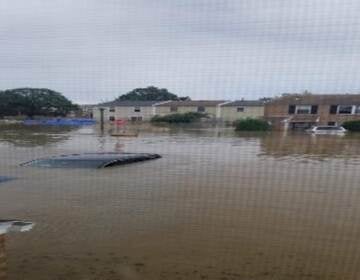Urban Land Institute report: Plan and build differently for climate change

Communities must change the way they plan and develop in response to our changing climate, says a new report by the The Urban Land Institute.
After Sandy: Advancing Strategies for Long-Term Resilience and Adaptability, offers guidance and how communities can respond to temperature and sea level rise while preserving the environment, boosting the local economy, and fostering a high quality of life.
ULI is a global research and education institute dedicated to responsible land use.
At the request of three district councils — ULI New York (city), ULI Northern New Jersey, and ULI Philadelphia — ULI in July 2013 convened a panel of the nation’s foremost authorities on real estate and urban planning to evaluate local and federal plans for strengthening community resiliency after Hurricane Sandy, and offer guidance on rebuilding efforts. This resulting report consists of 23 recommendations focused on four areas — land use and development; infrastructure, technology and capacity; finance, investment and insurance; and leadership and governance.
The full report can be read here. Some highlights:
• Identify local land use typologies to accurately assess a region’s capacity for resiliency. This includes evaluating a variety of factors, including environmental, political, cultural and economic conditions, as well as population density and the scale of and access to transit.
• Conduct a cost/benefit analysis of the defined land use typologies to identify less vulnerable zones for long-term planning and public spending. In responding to the costs of preserving and protecting certain high-risk locations, communities will need to develop new land use overlay zones that balance the value of continuing their current use with the cost of doing so. Over time, this will lead to new policies, investment strategies and outcomes that shift investment from high-risk areas to less vulnerable ones.
• Reconstitute the Hurricane Sandy Rebuilding Task Force as an ongoing task force comprised of federal, state and local representatives and use it as a replicable model for coordinated decision-making on rebuilding.
• Design protective infrastructure to do more than protect. Since protective infrastructure can serve multiple functions, it can be of great economic and ecological value if it is designed in a way that contributes to the creation of new development opportunities, doubles up to accommodate other infrastructure uses, improves the quality of the public realm and waterfront experience, and enhances natural systems. (For instance, the panel recommends that serious consideration be given to Seaport City, proposed earlier this year by the Bloomberg administration as part of its resiliency plan, which would entail development of a multi-purpose levee in the East River to both protect Lower Manhattan and accommodate residential and commercial development.)
• When appropriate, devolve funding to the lowest level of government. Villages, townships and cities should have the authority to manage and implement federal and state funds, provided they can demonstrate the capacity to do so, and they should coordinate decision making with a regional entity.
The report is being discussed today at a morning event in New York and an afternoon event in Trenton.
David Ricci, partner at The Flynn Company in Philadelphia, is one of the ULI representatives leading the discussions.
“The implications of climate change and rising sea levels are issues that are here to stay,” Ricci said in a printed statement. “How well we as a society adapt depends on our ability to accurately calculate its impact on the built and natural environments, and to plan, develop, finance, and insure more resilient communities.”
WHYY is your source for fact-based, in-depth journalism and information. As a nonprofit organization, we rely on financial support from readers like you. Please give today.





